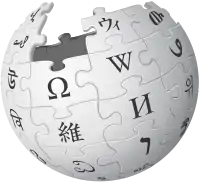De Morgan algebra
English
Alternative forms
- de Morgan algebra
Etymology
Named after British mathematician and logician Augustus De Morgan (1806–1871). The notion was introduced by Grigore Moisil.
Noun
De Morgan algebra (plural De Morgan algebras)
- (algebra, order theory) A bounded distributive lattice equipped with an involution (typically denoted ¬ or ~) which satisfies De Morgan's laws.
- 1980, H. P. Sankappanavar, A Characterization of Principal Congruences of De Morgan Algebras and its Applications, A. I. Arruda, R. Chuaqui, N. C. A. Da Costa (editors), Mathematical Logic in Latin America: Proceedings of the IV Latin American Symposium on Mathematical Logic, page 341,
- Finally it is shown that the compact elements in the congruence lattice of a De Morgan algebra form a Boolean sublattice.
- 2000, Luo Congwen, Topological De Morgan Algebras and Kleene-Stone Algebras, The Journal of Fuzzy Mathematics, Volume 8, Pages 1-524, page 268,
- By a topological de Morgan algebra we shall mean an abstract algebra where is a de Morgan algebra,
- 2009, George Rahonis, Chapter 12: Fuzzy Languages, Manfred Droste, Werner Kuich, Heiko Vogler (editors), Handbook of Weighted Automata, Springer, page 486,
- If is a bounded distributive lattice with negation function (resp. a De Morgan algebra), then constitutes also a bounded distributive lattice with negation function (resp. a De Morgan algebra); for every its negation is defined by for every .
- 1980, H. P. Sankappanavar, A Characterization of Principal Congruences of De Morgan Algebras and its Applications, A. I. Arruda, R. Chuaqui, N. C. A. Da Costa (editors), Mathematical Logic in Latin America: Proceedings of the IV Latin American Symposium on Mathematical Logic, page 341,
Hypernyms
Hyponyms
Translations
bounded distributive lattice equipped with an involution satisfying De Morgan's laws
Further reading


This article is issued from Wiktionary. The text is licensed under Creative Commons - Attribution - Sharealike. Additional terms may apply for the media files.